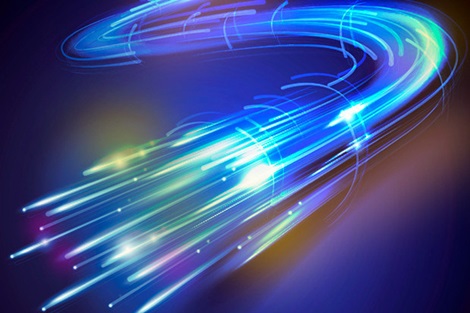At this year’s Consumer Electronics Show, the NCTA (Internet and Television Association), launched an initiative to bring 10G™ to homes across America by 2020. This ambitious campaign by the cable industry left many consumers scratching their heads, puzzled by precisely what 10G is and how it relates to another big, buzzworthy tech initiative called 5G.
5G technology, developed by mobile providers, is currently in beta and promises to be the next big leap in innovation that could replace traditional broadband’s pedestrian speeds. The cable industry, spooked by the potential behind advancements in wireless technology, is attempting to convince consumers 10G is the bleeding-edge internet speed that will make the US the envy of the world. After all, ten is twice as much as five, and aren’t faster speeds better?
Unfortunately, while this argument sounds reasonable, the math doesn’t quite add up—it conflates two very different technologies.
What is 10G?
When we discuss 10G, it’s important to define what the G stands for. In this case, the G refers to a gigabyte or 10-gigabyte internet speeds. Considering many cities currently have access to internet that tops out at 1 gigabyte (or 1 Gbps), speeds reaching 10G would be blisteringly fast and a dramatic increase for the current broadband and fiber cable networks to achieve in just a few short years. According to research from M-Lab, the average internet speed in the United States hovered at just below 26 Mbps in 2018.
What’s the difference between 5G and 10G?
Understanding the difference between 5G and 10G is easy once you realize the G stands for something different in each terminology. While the G in 10G stands for the gigabyte internet speeds delivered by wired networks to homes or businesses, the G in 5G stands for generation and refers to stages of development in mobile technology. The first cellular networks were referred to as 1G (1st generation), and subsequent stages of technological advancement in the mobile industry were named accordingly: 2G represented digital data capabilities, while 3G was faster data delivery, and 4G, which most mobile phones currently use, is based on LTE networks.
So, what will 5G deliver? Mobile providers are working on multi-gigabit speeds that, in theory, would use a cluster of cell sites to amplify at lower frequencies and send data shorter distances. This technology would mean faster speeds and less latency or loss, circumventing the expense of building additional infrastructure.
Nokia CEO Rajeev Suri explained the considerable potential he sees behind 5G at a recent press conference. “5G will enable productivity growth on a historical scale. Between 2028 and 2033, we expect gains similar to those the US experienced in the 1950s, in the range of 30 to 35 percent . . . . That is revolutionary.”
Does 5G still sound like nonsense? Let’s discuss the applications of 5G and why it could have more impact on productivity and innovation than 10G wired internet speeds.
Why 5G, not 10G, is the next frontier for the IoT
A cable network capable of delivering 10-gigabyte speeds, with balanced upload and download rates, would be the futuristic and reliable broadband that innovators have been dreaming about for almost a decade. It would revolutionize many industries such as healthcare, gaming, virtual reality, and education and rapidly accelerate the development of fabled smart cities.
However, the technological advancement behind 5G opens extraordinary opportunity not just for internet speeds but for the Internet of Things. The number of connected devices in businesses and homes is exploding, with consumer demand for smart products pushing wireless infrastructure to capacity.
Internet specialist Catherine McNally from SatelliteInternet.com explains, “5G nodes are typically easier to install than fiber-optic lines or cable internet, and the hope is 5G providers will be more likely to extend coverage by installing a wide network of nodes. If done right, 5G boosts the chances of rural areas with limited internet options gaining access to higher speeds and better coverage.” 5G has the potential to take IoT to the next level and usher in unprecedented efficiency and accessibility to faster internet speeds even in remote areas.
Tech going forward
This next generation of mobile technology may do more to bring faster internet speeds and make the Internet of Things available to more households than 10G wired internet could provide. While both initiatives are driving competition and innovation, 5G technology has the potential to transform our everyday lives by bringing faster, wireless internet speeds to every corner of the country.






